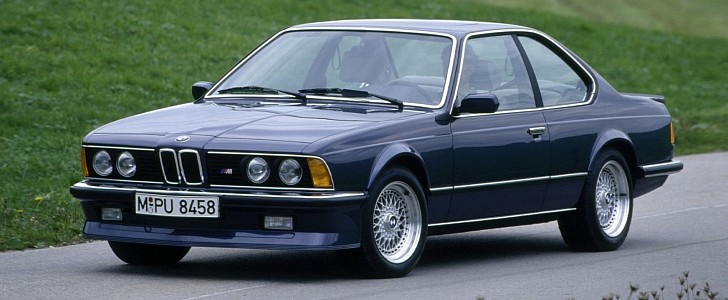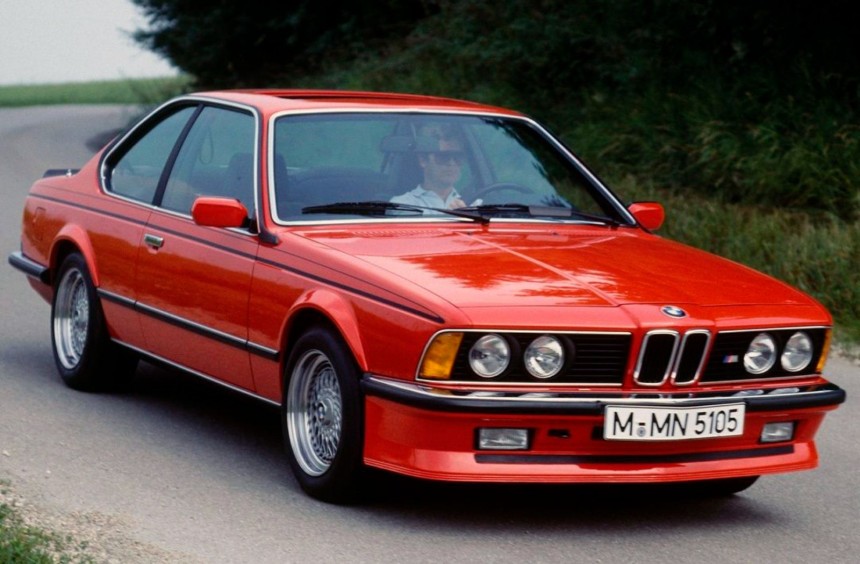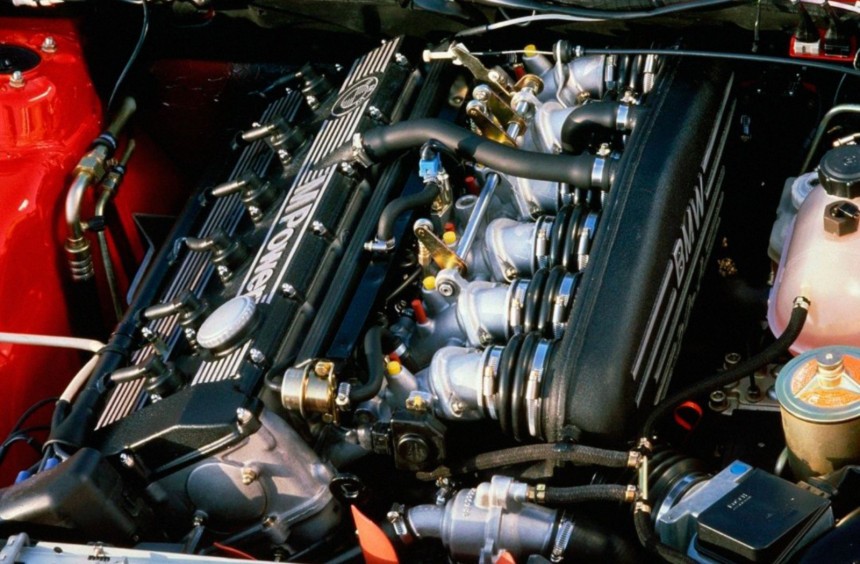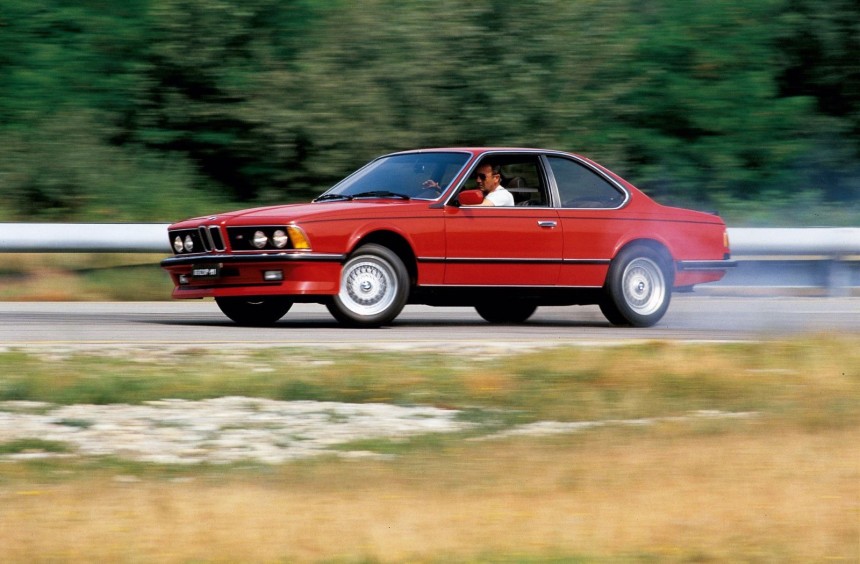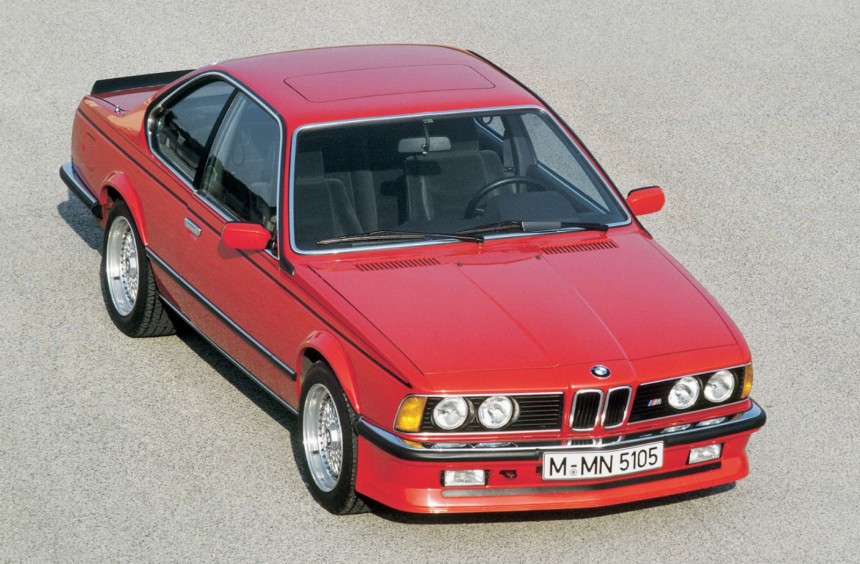Dubbed M635CSi in Europe or M6 in North America and Japan, the first high-performance 6 Series came out in the mid-eighties and quickly turned into the dream car for many enthusiasts all around the globe.
Today, this brilliant coupe seems to have been forgotten by many so-called BMW M fanatics who prefer to spend more money on its smaller and far more spartan sibling – the race-bred E30 M3. Because of this, the M635CSi/M6, a car that was around $10,000 more expensive during the late 1980s is now, on average, $20,000 cheaper.
While everyone seems to know the story of the E30 M3 and what makes it special, in this article, we’ll take a look back at the first M-badged 6 Series to understand why paying about $50.000 (the average price, according to classics.com) on one is a heck of a deal.
The story started in 1976 when BMW introduced a successor for its E9 four-seat coupe range. Codenamed E24 but officially marketed as the 6 Series, the new Paul Bracq-designed model grew into a veritable grand tourer that initially carried over the celebrated M30 inline-six from its predecessor. It was praised for its comfortable yet engaging road manners and upscale features, but the available variants weren’t as sporty as many customers would have liked. That changed in 1978 when a performance-oriented flagship model called 635CSi hit the streets. With a revised chassis, stiffer suspension, bespoke body enhancements, and 218 hp on tap, it made the 6 Series far more desirable, but it was not quite the high-performance coupe that enthusiasts were craving.
Fortunately, BMW was far from done with beefing up the Six and to take it to the next level, it was passed down to the Motorsport department, where a legend was born.
After years of development and fine-tuning, the M635CSi was finally unveiled to the public at the 1983 Frankfurt Motor Show. Two years later, it made it to U.S. shores, where it was marketed as the M6, mainly because the moniker was shorter and did a better job of distinguishing the new model from the 635CSi.
Based on the facelifted E24, it looked much like the 635CSi to the untrained eye, but upon closer examination, the new front bumper, slightly lower stance, BBS RS wheels, and M badges made it clear that this was a different kind of beast. More evidence of this could be found inside, where full leather, power-adjustable Recaro bucket seats, and a smaller tri-spoke steering wheel infused a healthy dose of sportiness into the 6 Series’ upscale cabin.
However, the most impressive upgrades were hidden underneath the bodywork. As was the case with the 635CSi, the high-performance model was built around an extensively upgraded chassis to increase rigidity and weight distribution. In addition, BMW M engineers fitted stiffer Bilstein shocks and larger ventilated disc brakes which substantially improved handling.
Under the hood, it initially came with a new version of the M1’s straight-six codenamed M88/3. The dry-sump lubrication system was replaced with a conventional one, and the Kugelfischer fuel injection system made way for a revised Bosch Motronic, but apart from that, the engine retained the dual-overhead-cam configuration as well as many of the race-bred goodies such as individual throttle bodies.
In its initial Euro-spec, the 3.5-liter could make 282 hp at 6,500 rpm and 251 lb-ft (340 Nm) at 4,500 rpm, but North American or Japanese customers had to settle with less power. Due to emission regulations, BMW had to develop the S38B35 on the backbone of the M88/3. Fitted with a catalytic converter, it could only make 256 hp and 243 lb-ft (330 Nm) of torque at the same engine speeds and, from the summer of 1987 onwards, this unit was also fitted into the European models.
Regardless of the engine iteration, the high-performance coupe came with a reinforced five-speed Getrag 280 manual and a limited-slip differential as standard.
According to BMW, the performance figures were about the same for both the M88/3- and S38B35 powered cars. A sprint to 60 mph (97 kph) from a standstill took around 5.8 seconds, the quarter-mile time stood at 14.5 seconds, and the top speed was 158 mph (255 kph).
At the time of its release, the car nicknamed “Sharknose” or “Bayern-Express” was the second-fastest production BMW after the M1. When compared to the E30 M3, it was about 300 pounds (136 kg) Havier, but the additional cylinders provided close to 100 extra horses.
Many will argue that the M3 was nimbler, which could be true, but that really depends on the driver. The M635CSi/M6 received positive reviews from the most prestigious automotive publications of the era for being extremely responsive and for staying planted to the ground through tight high-speed corners.
Another argument in favor of the M3 is its motorsport career. During the late-1980s and early-1990s, it won numerous titles all across the globe, becoming one of the most successful touring cars of all time.
While the M635CSi/M6 was never a homologation special, versions of the 6 Series (mainly the 635CSi) tuned by BMW M were successful at various 24-hour events. With similar chassis modifications as the M model, the race cars won the Spa 24 Hours in 1983, 1985, and 1986, as well as the 24 Hours Nürburgring in 1984 and 1985. In addition, these cars continued the tradition set by the legendary 3.0 CSi by winning the European Touring Car Championship in 1981, 1983, and 1986.
Built until 1989 in 5,855 examples, the M-badged grand tourer is also rarer than the E30 M3, which was produced in 17,970 units.
So, if you’re a classic BMW fan who is thinking about spending around $75,0000 on an E30 M3, you should seriously consider the first M-tuned 6 Series instead. It may not be the road-legal version of a legendary touring car, but it’s faster, more powerful, classier, and best of all, cheaper.
Recently, a highly original M88/3-powered 1987 Euro-spec example with approximately 106.000 miles (170.000 km) on the odometer was available on the Bring a Trailer platform. The highest bid reached $52.000, but it did not meet the owner’s reserve. That being said, it is rumored that $55.000 would have sealed the deal. On the same platform, a 1988 M3 with 85,000 miles (139,000 km) sold for $90,000 this month.
While everyone seems to know the story of the E30 M3 and what makes it special, in this article, we’ll take a look back at the first M-badged 6 Series to understand why paying about $50.000 (the average price, according to classics.com) on one is a heck of a deal.
The story started in 1976 when BMW introduced a successor for its E9 four-seat coupe range. Codenamed E24 but officially marketed as the 6 Series, the new Paul Bracq-designed model grew into a veritable grand tourer that initially carried over the celebrated M30 inline-six from its predecessor. It was praised for its comfortable yet engaging road manners and upscale features, but the available variants weren’t as sporty as many customers would have liked. That changed in 1978 when a performance-oriented flagship model called 635CSi hit the streets. With a revised chassis, stiffer suspension, bespoke body enhancements, and 218 hp on tap, it made the 6 Series far more desirable, but it was not quite the high-performance coupe that enthusiasts were craving.
After years of development and fine-tuning, the M635CSi was finally unveiled to the public at the 1983 Frankfurt Motor Show. Two years later, it made it to U.S. shores, where it was marketed as the M6, mainly because the moniker was shorter and did a better job of distinguishing the new model from the 635CSi.
Based on the facelifted E24, it looked much like the 635CSi to the untrained eye, but upon closer examination, the new front bumper, slightly lower stance, BBS RS wheels, and M badges made it clear that this was a different kind of beast. More evidence of this could be found inside, where full leather, power-adjustable Recaro bucket seats, and a smaller tri-spoke steering wheel infused a healthy dose of sportiness into the 6 Series’ upscale cabin.
However, the most impressive upgrades were hidden underneath the bodywork. As was the case with the 635CSi, the high-performance model was built around an extensively upgraded chassis to increase rigidity and weight distribution. In addition, BMW M engineers fitted stiffer Bilstein shocks and larger ventilated disc brakes which substantially improved handling.
In its initial Euro-spec, the 3.5-liter could make 282 hp at 6,500 rpm and 251 lb-ft (340 Nm) at 4,500 rpm, but North American or Japanese customers had to settle with less power. Due to emission regulations, BMW had to develop the S38B35 on the backbone of the M88/3. Fitted with a catalytic converter, it could only make 256 hp and 243 lb-ft (330 Nm) of torque at the same engine speeds and, from the summer of 1987 onwards, this unit was also fitted into the European models.
Regardless of the engine iteration, the high-performance coupe came with a reinforced five-speed Getrag 280 manual and a limited-slip differential as standard.
According to BMW, the performance figures were about the same for both the M88/3- and S38B35 powered cars. A sprint to 60 mph (97 kph) from a standstill took around 5.8 seconds, the quarter-mile time stood at 14.5 seconds, and the top speed was 158 mph (255 kph).
Many will argue that the M3 was nimbler, which could be true, but that really depends on the driver. The M635CSi/M6 received positive reviews from the most prestigious automotive publications of the era for being extremely responsive and for staying planted to the ground through tight high-speed corners.
Another argument in favor of the M3 is its motorsport career. During the late-1980s and early-1990s, it won numerous titles all across the globe, becoming one of the most successful touring cars of all time.
While the M635CSi/M6 was never a homologation special, versions of the 6 Series (mainly the 635CSi) tuned by BMW M were successful at various 24-hour events. With similar chassis modifications as the M model, the race cars won the Spa 24 Hours in 1983, 1985, and 1986, as well as the 24 Hours Nürburgring in 1984 and 1985. In addition, these cars continued the tradition set by the legendary 3.0 CSi by winning the European Touring Car Championship in 1981, 1983, and 1986.
So, if you’re a classic BMW fan who is thinking about spending around $75,0000 on an E30 M3, you should seriously consider the first M-tuned 6 Series instead. It may not be the road-legal version of a legendary touring car, but it’s faster, more powerful, classier, and best of all, cheaper.
Recently, a highly original M88/3-powered 1987 Euro-spec example with approximately 106.000 miles (170.000 km) on the odometer was available on the Bring a Trailer platform. The highest bid reached $52.000, but it did not meet the owner’s reserve. That being said, it is rumored that $55.000 would have sealed the deal. On the same platform, a 1988 M3 with 85,000 miles (139,000 km) sold for $90,000 this month.
